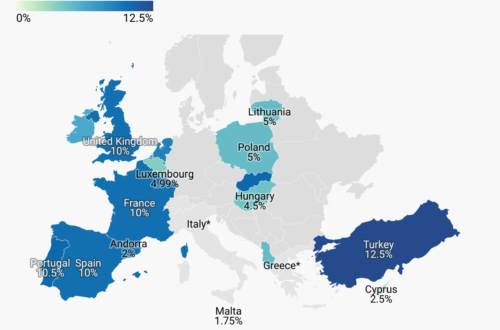
What’s Hot in Sustainable Investing
Introduction
Sustainable investing has become a major focus for investors worldwide, driven by growing awareness of environmental, social, and governance (ESG) issues. This approach not only aims to generate financial returns but also to create positive impacts on society and the environment. Let’s explore the latest trends, market analysis statistics, and examples of sustainable investments, along with the impacts from the Trump government and EU responses.
Current Trends in Sustainable Investing
- Climate-Transition Investing: Investors are increasingly focusing on companies that are actively transitioning to low-carbon operations. This includes investments in renewable energy, energy efficiency, and carbon capture technologies. Companies that are leading the way in reducing their carbon footprints are attracting significant investor interest.
- Sustainable Bonds: The issuance of sustainable bonds is expected to reach USD 1 trillion by 2025, driven by lower interest rates and increased demand for financing green projects. These bonds are used to fund initiatives that have positive environmental and social impacts, such as clean energy projects, sustainable agriculture, and affordable housing.
- Biodiversity Finance: Investments aimed at preserving biodiversity are gaining traction. This includes funding for conservation projects, sustainable agriculture, and nature-based solutions. Biodiversity finance is becoming a critical component of sustainable investing as investors recognize the importance of protecting ecosystems.
- AI and ESG Integration: Artificial intelligence is being rapidly adopted to enhance ESG data analysis, helping investors make more informed decisions and manage risks effectively. AI can process vast amounts of data to identify ESG risks and opportunities, providing investors with valuable insights.
Impacts from the Trump Government
During President Trump’s administration, several policies significantly impacted sustainable investing:
- Climate Policy Changes: Trump’s withdrawal from the Paris Agreement and rollback of over 100 environmental regulations shifted focus away from renewable energy and ESG investments. Despite these federal policy changes, private capital continued to drive global climate funding, with renewable energy investments remaining economically viable.
- Deregulation and Traditional Energy Support: The Trump administration’s support for fossil fuel industries and deregulation efforts attracted investments back into carbon-based sectors like coal, oil, and natural gas. This shift posed challenges for ESG-focused funds, although consumer and investor demand for sustainability remained resilient.
- Impact on Multilateral Development Banks (MDBs): Trump’s stance on international agreements raised concerns about the performance of MDB bonds, which rely heavily on US support. However, MDB bonds continued to offer appealing yields and strong fundamentals, mitigating some of the impacts of reduced US government backing.
EU Responses
The European Union has taken proactive steps to support sustainable investing:
- Platform on Sustainable Finance: The EU’s Platform on Sustainable Finance monitors capital flows to sustainable investments, leveraging EU taxonomy data to guide policymaking and support a clean and competitive transition. This framework helps track the progress of large European corporates in aligning their capital expenditures with sustainability goals.
- Savings and Investment Union (SIU): The European Commission’s proposal for a European Savings and Investments Union aims to mobilize private savings to support sustainable finance. This initiative includes measures to enhance financial literacy, scale impact investment products, and unlock pension fund capital for sustainable projects.
- Omnibus Package: The EU’s Omnibus reforms reinforce Europe’s attractiveness as a hub for sustainable investment and industrial innovation. These regulatory changes contrast with the deregulatory tendencies observed in other major economies, particularly the United States.
Market Analysis
The sustainable investment market is experiencing significant growth:
- Global Market Size: The sustainable investment market was valued at approximately USD 6.718 billion in 2024 and is expected to reach USD 42.935 billion by 2033, growing at a compound annual growth rate (CAGR) of 22.9%. This rapid growth reflects the increasing demand for investments that align with ESG principles.
- Assets Under Management (AUM): Sustainable equity and fixed-income funds reached a record 7.9% of global total AUM in the first half of 2023. This indicates a strong investor preference for sustainable investment options.
- US Market: In the United States, sustainable investments account for $52.5 trillion in assets under management, with $6.5 trillion explicitly marketed as ESG or sustainability-focused investments. This highlights the significant role of the US market in driving the growth of sustainable investing.
Examples of Sustainable Investments
- ESG-Focused Mutual Funds: These funds invest in companies that meet specific environmental, social, and governance criteria. For example, the Vanguard ESG U.S. Stock ETF allows investors to diversify their portfolios while adhering to ethical standards. These funds are designed to provide competitive returns while promoting sustainable business practices.
- Green Bonds: Green bonds are used to finance projects that have positive environmental impacts. These can include renewable energy installations, energy efficiency improvements, and sustainable water management. Green bonds offer investors a way to support environmental initiatives while earning returns.
- Thematic ETFs: Thematic ETFs focus on specific sustainability themes, such as clean energy, water conservation, or social justice. These funds allow investors to target their investments towards areas they are passionate about. For example, the iShares Global Clean Energy ETF invests in companies that produce energy from renewable sources.
- Eco-Friendly Real Estate: Investing in eco-friendly real estate involves funding properties that incorporate sustainable building practices, energy-efficient systems, and green certifications. These investments not only reduce environmental impact but also offer long-term financial benefits through energy savings and increased property values.
- Social Impact Bonds: These bonds fund projects that aim to achieve positive social outcomes, such as improving education, healthcare, or community development. Social impact bonds provide a way for investors to support initiatives that address critical social issues.
Sustainable investing is rapidly evolving, with new trends and opportunities emerging to address global challenges. The market is poised for substantial growth, driven by increased investor demand, regulatory support, and technological advancements. By investing in sustainable assets, investors can achieve financial returns while contributing to a more sustainable and equitable world.
#SustainableInvesting #ESG #ClimateAction #GreenBonds #BiodiversityFinance #AI #EcoFriendly #SocialImpact #MarketAnalysis #InvestmentTrends





